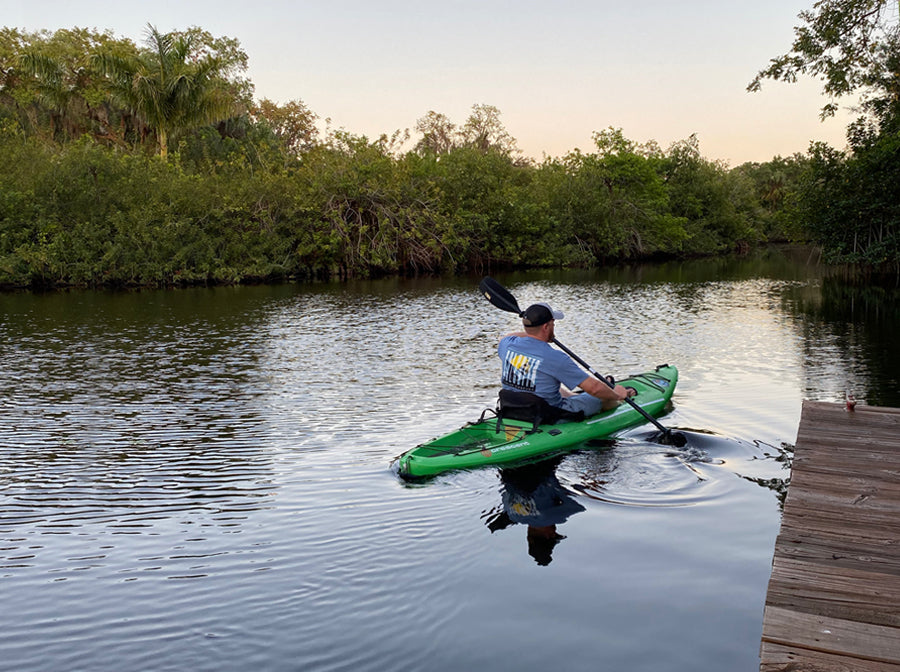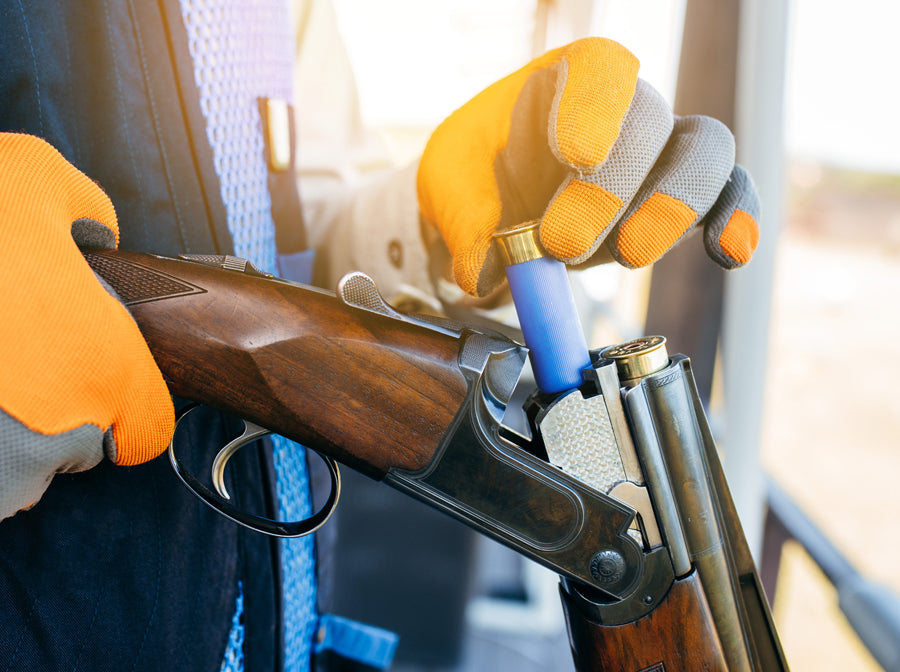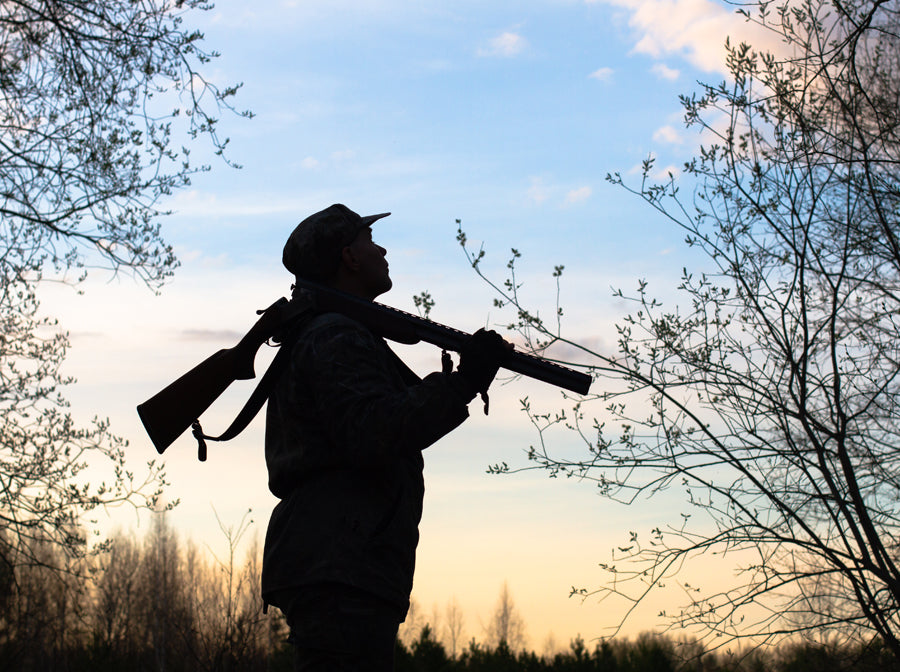There’s magnetism to backcountry water, where streams, pools and falls provide escape from today’s hectic pace. Paddling is one of the best ways to explore these hidden waters. A canoe or kayak can provide a quiet, relaxing look at sights otherwise unseen from shore—and access to untouched fishing holes. When you’re ready to explore the outdoors from a different vantage point, it’s time to consider a canoe or kayak.
Getting started paddling is not quite as simple as purchasing a canoe or kayak and heading to a lake or river. While volumes of expert advice is available, the tips can sometimes be overwhelming. This beginner’s guide to canoes and kayaks clears up some of the confusion with a glimpse at the watercraft design and the types of paddling they help you pursue.

Paddling is a fun and relaxing way to explore rivers and other waterways.
Canoe Models
Canoes, like cars, come in different sizes, colors and even materials. Some are better at one task, while sacrificing benefits in others. Today, you can select one-, two-, three- and even four-person canoes, probably more if you look hard enough. Larger may be better when enjoying the company of friends and family, but you need to haul it to and from the water. That requires tie downs or towing. Make sure your vehicle is equipped to handle the load.
Larger canoes can also be a challenge when on the water solo, adding another reason why smaller is sometimes better. Inflatable versions are available, but they require an air pump, and performance is usually more akin to a raft. There’s also a square-back-canoe style that abandons the streamlined stern to provide motor mounting space.
Canoe Construction
As for material, canoes made from aluminum lend themselves nicely to family outings and fishing trips. Their metal construction ensures longevity, and they survive the elements when stored outside at a weekend hideaway. Aluminum models weigh more than most other canoes and are noisier, but they are extremely popular.
Canoes made from modern polymers, too often lumped into the “plastic” category, are also popular. They hold up better than that label would lead you to believe, are lighter than the metal models, but they age quickly when stored in direct UV light.
Fiberglass canoes are also lighter, yet have a long service life. They tend to be slightly less stable than other designs and, with age or heavy impact, the hulls have a habit of developing cracks. Manufacturers always recommend storage out of direct sunlight.
Kevlar and graphite-fiber construction are at the top end of the price list and are usually the lightest in weight. The former is often easier for beginners to control, but durability varies by construction and repairs are expensive. Racing canoes typically use the latter, but that speed-enhancing stiffness falls victim to bumps and blows at a higher frequency.
Folding canoes are lightweight and tailored for whitewater expeditions that involve lengthy portage around dangerous or impassible sections of a river.
Yes, you can still find wood canoes, although a quality version today is expensive. Wood rots, fasteners rust and maintenance is required. Traditionalists don’t mind the added work, though, so don’t expect wooden canoes to disappear anytime soon.

Canoes are available in a variety of sizes, colors and materials.
Kayak Models
There are two distinct families of kayaks—the whitewater clan and the flat-water family, which is more beginner friendly. Flat-water models feature a wider profile and longer length than their whitewater cousins. Their design improves stability and increases speed for longer paddling trips.
Sit-on-Top Kayaks (SOT)
Sit-on-top kayaks are often slower than sit-inside kayaks, the operator usually gets more wet, and they don’t handle rough water as well as some other designs. However, sit-on-top kayaks provide easier access for a wide range of paddlers—with the paddler basically riding atop. They are incredibly convenient and a great place for beginners to start.
Real performance and stability unlock when the person sits inside a kayak’s cockpit. There are a variety of sit-inside kayaks to choose from and many variations.
Touring Kayaks
Touring kayaks, for example, are narrower and run somewhere around 12-feet in length and longer. They are usually the best choice if long trips are on the schedule. Internal braces aid the paddler in uprighting themselves, and there’s sometimes a keel to help with steering. Touring kayaks are fast, and they can also be expensive.
Inflatable Kayaks
Inflatable kayaks address any concern about transporting a kayak to the water. There are even modulars that provide the same versatility. Inflatable kayaks perform best on moving water, such as slow-moving rivers and streams.
Fishing Kayaks
Fishing kayaks feature rod holders and storage space for tackle. Some are big enough to stand on to deliver long casts. Anglers will find many other kayaks will do double duty well, but if your passion is wetting a line, be sure to look at those tailored for the task.
Recreational Kayaks
Members of the “recreational” kayak family are the safest bet for most beginners. They are shorter than touring models, less expensive on average and if you plan to bring a small child or dog along, there’s probably enough room in that generous-sized cockpit. Even if you’re alone you’ll welcome the extra storage space.
Kayak Construction
As you might expect, kayak builders use the same materials found in canoes. Aluminum might be the exception, although there are kayak models that use it in their frame. Strengths and weaknesses in each are identical to canoes, along with relative price tags.

Recreational kayaks make a great option for beginners of all ages.
Learning to Paddle
Armed with knowledge in the designs and their often-subtle advantages, you’ll be ready for the most important step—hands-on instruction. Whether it’s a community college class, seminar at a local dealer or informal outing with an experienced friend, you’ll get the opportunity to feel the handling and learn more about the pursuit. It’s also a great chance to discover the right gear, the first time.
Add some practice, and you’re armed with all the right ingredients to make your next trip a rediscovery of the great outdoors—from a fresh new angle.
Frequently Asked Questions About Kayaks and Canoes
What’s the difference between kayaks and canoes?
Although canoes and kayaks are similar, there are some key differences between the two. Canoes feature an open-top design with a wider frame. They have taller sides, or gunwales, and ride higher out of the water than kayaks. Canoes are built to haul more gear and equipment, and more people than kayaks. They are ideal for carrying camping gear, supplies, large coolers—as well as kids and pets. Kayaks sit lower in the water, and are usually lighter and faster than canoes.
Which is easier to paddle, a kayak or canoe?
Paddling both kayaks and canoes requires practice. Kayaks are usually easier to paddle in a straight line. Narrow kayaks have a smaller wet surface area, which makes them easier to propel. Kayaks are also incredibly maneuverable and typically much faster—thanks in part to a two-bladed paddle—which translates into less effort to get to your destination. With the right training, kayaks are usually better for paddling in rough water. However, canoes are easy to turn, especially with two paddlers, and they offer more room and comfort.
Is it easier to canoe or kayak?
Paddling canoes and kayaks requires practice and time spent on the water. If you’re new to paddling, consider taking a class or getting instruction from a guide or an experienced paddler. Proper training will increase your safety—possibly even save your life—and maximize your fun on the water.
What’s more stable, a canoe or kayak?
Canoes are generally more stable than kayaks thanks to their wider beam, or width. A canoe’s stability is most apparent when paddling on still or flat waters. However, kayaks can actually be more stable in rough conditions, such as whitewater. Wider kayaks, including sit-on-top (SOT) and fishing kayaks, are more stable than longer, narrower touring kayaks.
What style kayak is the most stable?
Wider kayaks are more stable. Entry-level recreational kayaks are generally shorter and wider than touring kayaks, making them the most stable option. The increased width (beam), offers more side-to-side stability. Wider kayaks are more stable across a variety of water conditions, provide more storage space and tend to be more comfortable for the paddler. However, wider kayaks suffer from increased friction due to a larger wet surface area, making them harder to propel.
What is a good size kayak for a beginner?
Recreational kayaks for beginners range from 8 to 13 feet long. Shorter, wider kayaks maximize stability, which makes it easier for a beginner to learn how to paddle. Recreational kayaks are great for paddling on slow-moving rivers and streams, smaller lakes, ponds and other calm waterways. Sit-on-top kayaks and fishing kayaks are also popular with new paddlers.
More Resources



